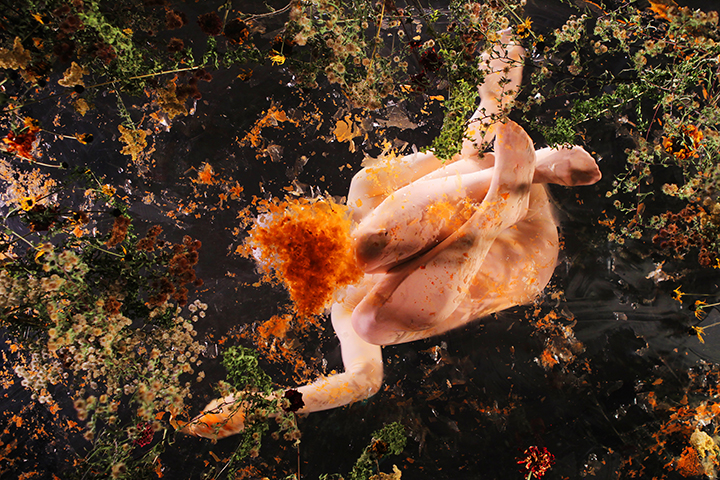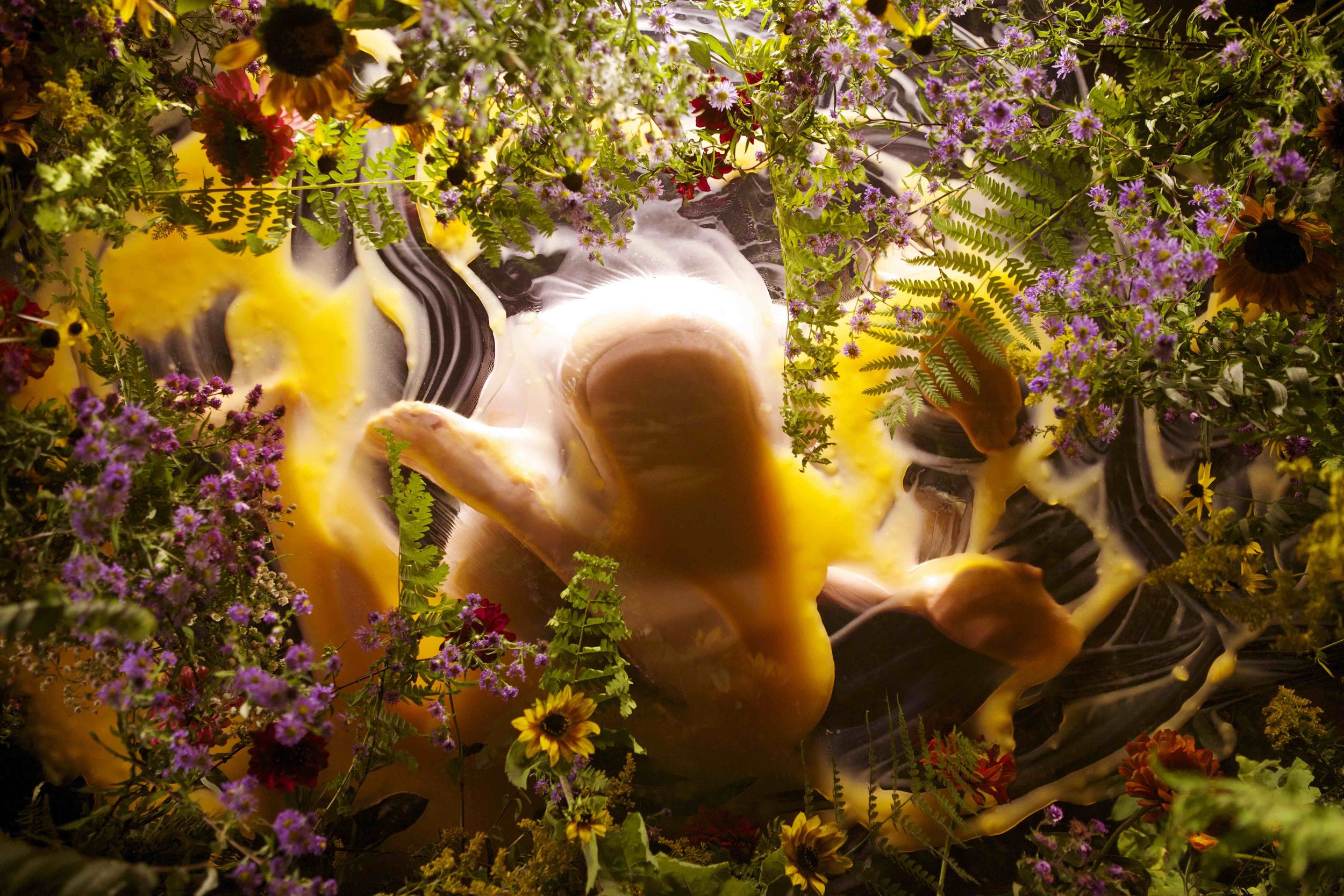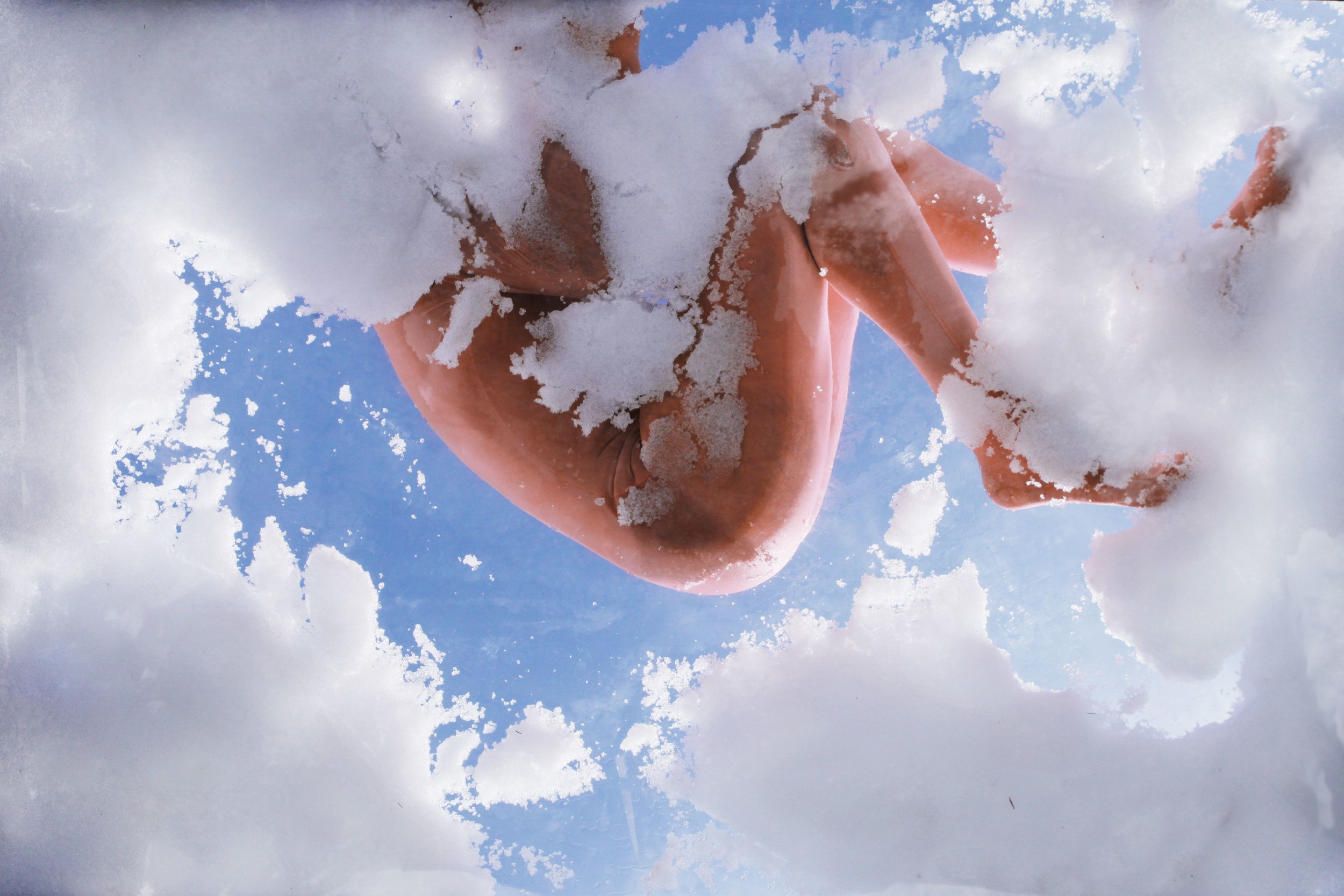Pink on Pink
Single Channel Video / Installation / Archival Pigment Prints. 2015
The four videos that make up Pink on Pink developed out of a desire to represent something subterraenean, unconscious, and alien about nature and the body. In each, myself and other performers, wearing suits of pink nylon, writhe and move on the surface of a large sheet of Plexiglas. The movements were captured photographically from below via time-lapse and the images stitched together, creating an insect-like choreography. Various environments were built above and below the plexi with materials such as dirt, flowers, snow, slime, plastic animals, and glitter—representing elements that are both “natural” and “non-natural”. The sounds for the films were constructed architecturally, layering three or four textures on top of one another, weaving a subtle language that mimics the materials and movement of the bodies.
At the time of developing this work I became very interested in the work of French psychoanalyst Julia Kristeva, and her ideas about language. She posits the development of language in the pre- birth state, the movements of the baby in the womb and the movements and sounds of the mother together creating a proto-semiotic language called the chora. The chora is not yet within the realm of signification or language but precedes and underlies it; it represents the shifts and rifts in pattern, gesture, utterance, and desire that ripple below language, causing its frequency. The space that is opened up by Kristevaʼs chora gives an idea of what it is to be essentially unnameable and uninhabitable as a fully formed subject.
Each video is an exploration of the body exploring the skin as the limit or boundary of what defines it, and the merging and unmerging of the body with its environment. The pink nylon becomes a second skin, or perhaps the inner surface of the skin turned inside out, cocooning the whole body. The surface of the glass also becomes a surface onto which the performer projects his/her body, an invisible surface mirroring the flat frame of the camera and the surface of the screen through which it is viewed. This flattening both reveals the body, like a specimen in a microscope, and simultaneously creates a layer of distance, a transparent wall between the performer and the viewer. The glass is both a surface that reveals and hides, much like the skin itself.
The videos were included in the show An Order, organized by Abbey Meaker of Overnight Projects, at St Joseph’s Orphanage in 2015, in which they were installed on tiny monitors embedded into the walls and floor. Here the movements become microscopic and other-worldy, like unconscious entities breaking through the preexisting architecture.
Stills from each film are also viewed via large-scale photographic prints, the movements of the performers frozen in time. In these the body and its environment become an abstraction and blend together, and are even further flattened into a tableau—a specimen caught.



